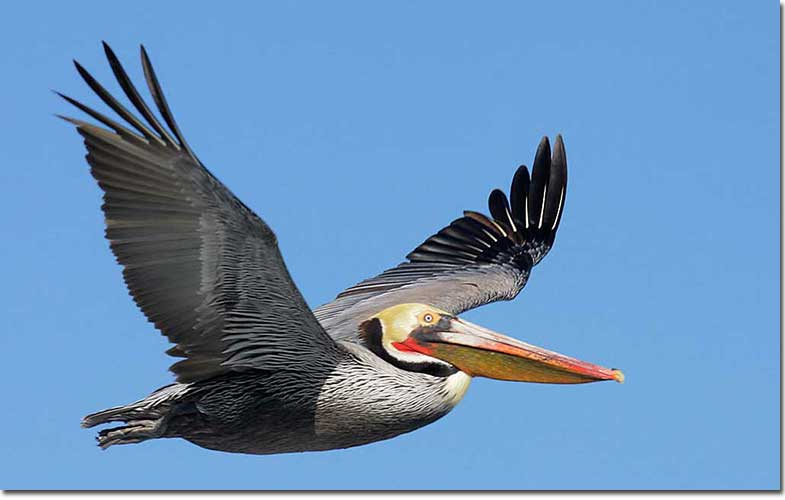The Brown Pelican is very elegant for its size. They have big, dark bodies, large bills, and curved necks.
Pods of Pelicans glide along the surface of the water on the southern and western coasts of the United States. You’ll see them rise and fall parallel to the waves.
Brown Pelicans feed by plunge-diving from high in the sky. The force from the impact will stun small fish allowing the birds to scoop them up.
The good news is these birds are fairly common today; they didn’t use to be. The Brown Pelican almost went extinct due to pesticide pollution, but they’re an excellent example of species recovery.
On this page
Identification
Adult Brown Pelicans have white necks, yellow heads, and grayish-brown bodies. They also have breeding plumage where the sides and back of the neck turn a dark, rich, reddish-brown.
The Brown Pelican is 39.4 to 53.9 inches (100 to 137 centimeters) in length and weighs 70.5 to 176.4 ounces (2 to 5 kilograms). Brown Pelicans are smaller than American White Pelicans but much bigger than Herring Gulls. Their large bills have a stretchy throat pouch that’s used for catching fish.
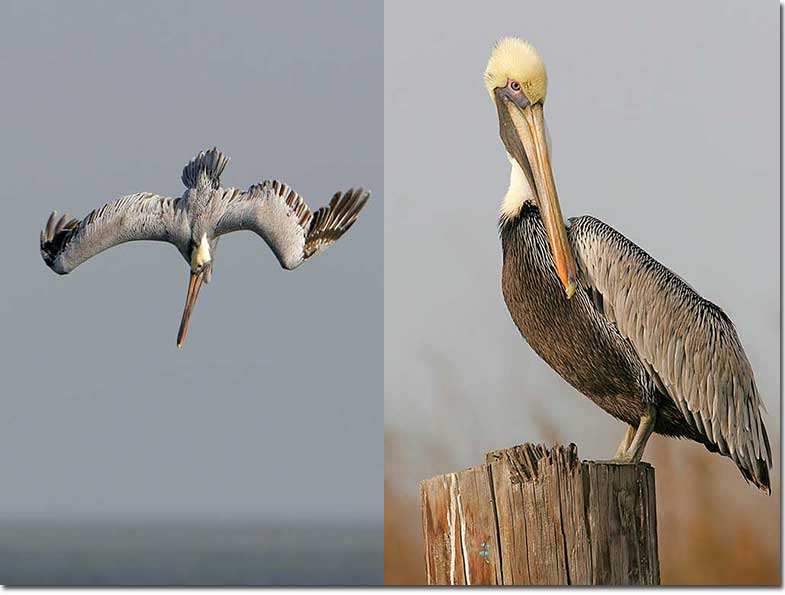
These birds do have regional differences. On the West Coast of the U.S., Brown Pelican adults have red on their throats when in breeding plumage. On the Gulf and East Coast, Brown Pelicans have greenish-black throat skin and are slightly smaller.
Female Brown Pelicans look identical to male Brown Pelicans.
Juvenile
Juvenile Brown Pelicans have grayish-brown upper parts (this includes the neck and head) and pale, whitish breasts and bellies. It takes around 30 days for Brown Pelicans to hatch, and they’ll stay with their mother until they’re 5 weeks old.
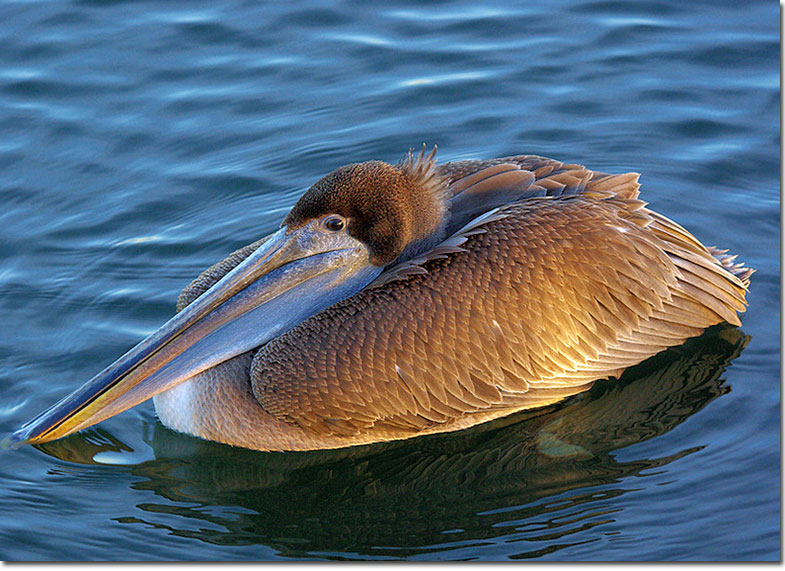
Habitat
Brown Pelicans live year-round in coastal marine habitats and estuaries along both the east and west coasts of the United States. Brown Pelicans breed mostly on natural islands in estuaries and barrier islands on the Gulf and Atlantic coasts. On the West Coast, they breed on rocky, dry islands offshore.
Diet
The Brown Pelican diet mainly consists of small fish like mullet, menhaden, anchovies, sailfin mollies, and herring. These fish swim in schools at the surface of the water, making them the perfect target for these birds. When a Brown Pelican is searching for food, they scout for fish from the air and dive head-first into the water once they catch a glimpse of its prey.
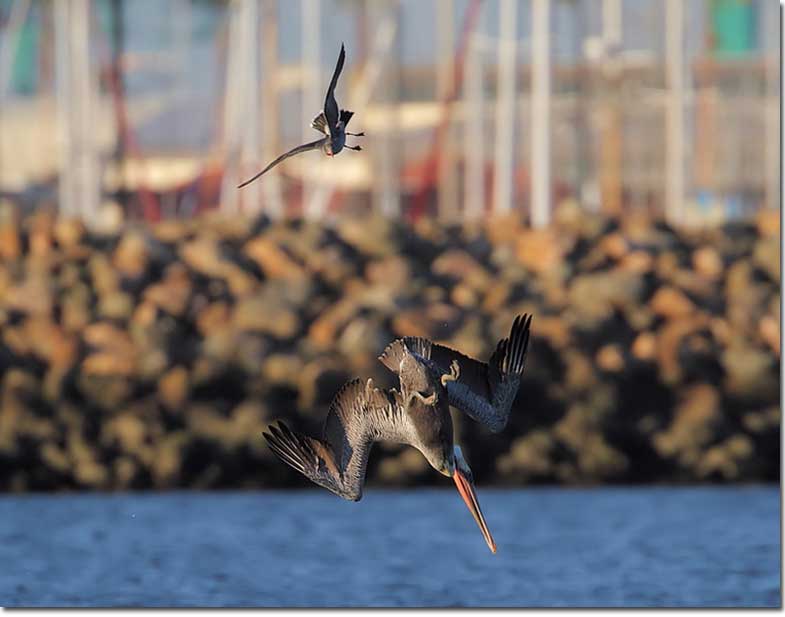
Brown Pelican
Brown Pelicans will dive into the water from heights up to 65 feet. They’ll twist and tuck their body before impact to protect their esophagus and trachea. As a Brown Pelican dives into the water, the pouch on its throat will expand to trap fish. It can fit up to 2.6 gallons of water.
They’ll sometimes catch prey with their bill while sitting on the surface of the water. They’ll choose to do this when the water is muddy, too shallow, or a large school of fish is close to the surface.
These birds have also been known to scavenge dead animals, eat invertebrates like prawns, and steal food from other seabirds.
Behavior
The Brown Pelican has an awkward walk on land, but don’t let that fool you. These birds are incredible fliers and strong swimmers.
Brown Pelicans fly to and from their fishing grounds in lines or v-formations just above the surface of the water. Brown Pelicans are one of two pelican species that perform the striking head-first dive to trap fish. Pelicans tend to forage during the day but have been observed feeding at night when there’s a full moon.
Range (and seasonal changes)
Brown Pelicans can be found on the North and South American coasts. These birds can be found on the west coast from British Columbia to the southern tip of South America. Brown Pelicans can be found on the east coast from Maryland to South America.
Most Brown Pelicans are permanent residents in their breeding range. However, there are some birds that migrate. For example, on the west coast, Brown Pelicans migrate up to British Columbia, and during the early winter, they head back south to the warmer waters on both coasts.
Wing shape
Brown Pelicans have wings that are very long, broad, and noticeably bowed when viewing the birds in flight. They have a wingspan of 78.7 inches (200 centimeters).
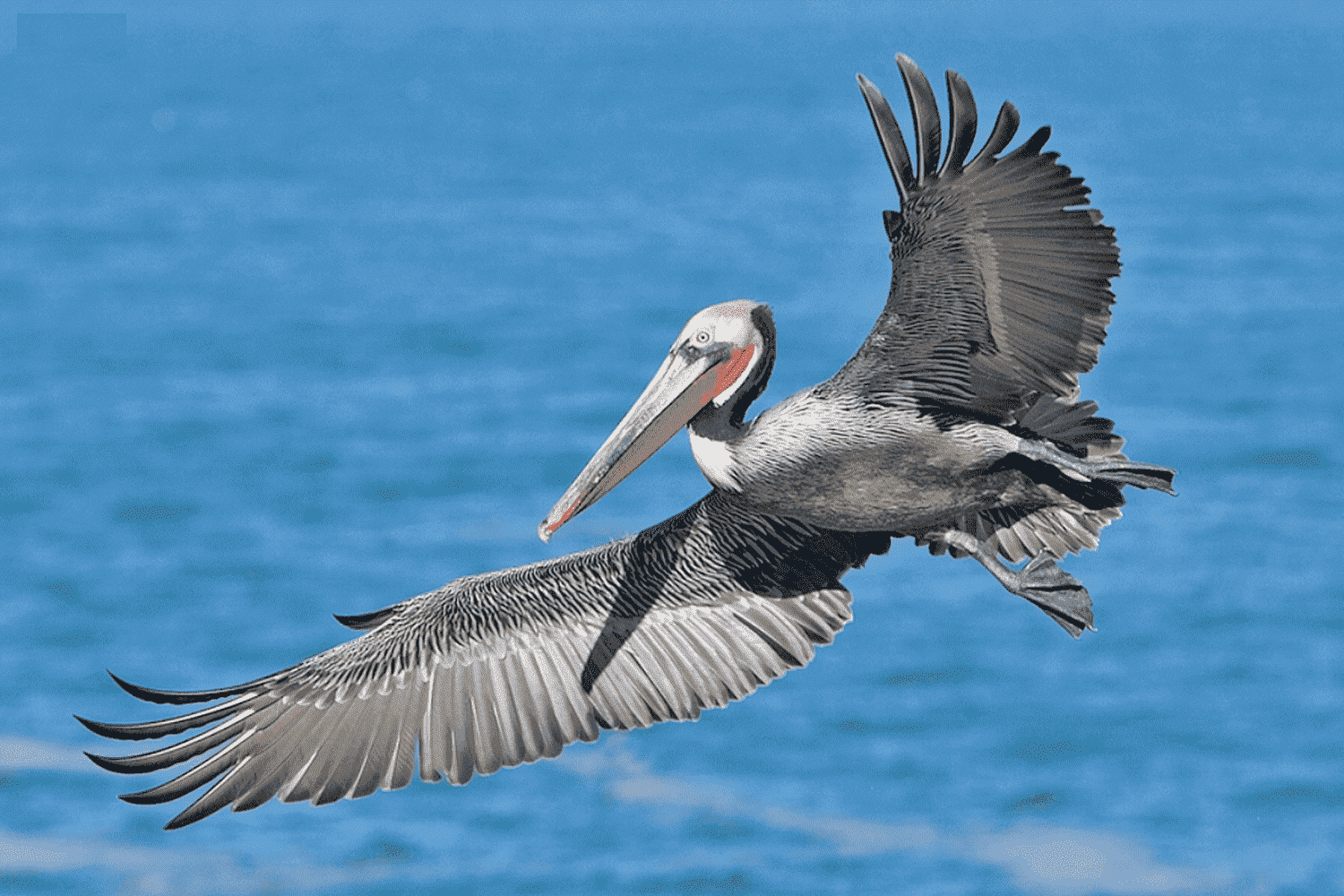
Photograph © Alan Wilson.
Fun Facts
- Brown pelicans are known for diving. However, they actually can’t dive very deep. This is because they have a profound subcutaneous air-sac system that gives them their buoyancy.
- The Brown Pelican is often associated with protection and self-sacrifice. So These birds are often the spirit animals of people who are looking for courage, strength, and community.
- Brown Pelicans dive into the water to catch food from very high up. They’ll dive from as high as 65 feet.
- Brown Pelicans are extremely social birds. They’ll stick with the same birds throughout their lives, lasting anywhere from 10 to 30 years. These birds will nest together, hunt together, feed together, and are even comfortable among other bird species.
Vocalization
Brown Pelicans rarely make any vocalizations. However, their wing-jerking displays do cause them to make noise. During this display, the air is forced from their lungs, which causes them to produce a hoarse, low sound.
In addition, Brown Pelican nestlings make a rasping, shrill squawk when begging for food. Finally, Brown Pelicans snap their bill together when defending their nest, creating a loud sound that resonates in their pouch.
Similar Species
Although Brown Pelicans are easy to recognize, they can still be confused with other species.
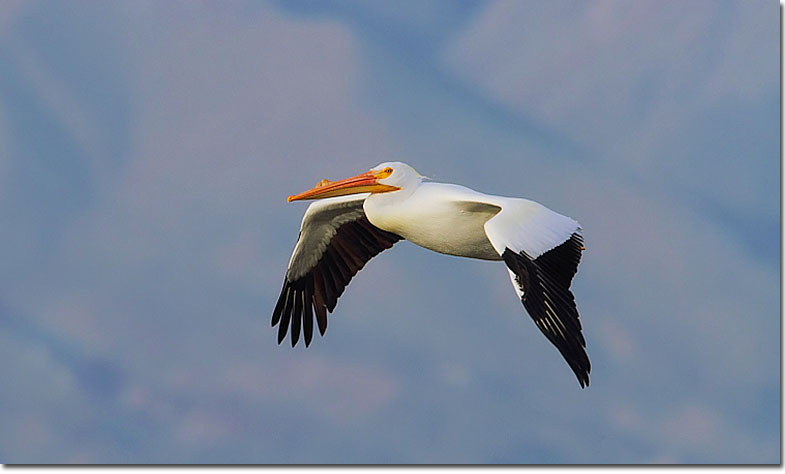
American White Pelicam
Compared to Brown Pelicans, American White Pelicans are larger, and have primarily white plumage with some black on the tips of their wings.
As the name hints, Brown Pelicans are more brown in color, especially juveniles.
Frequently Asked Questions
How many Brown Pelicans are left in the world?
There are about 370,000 Brown Pelicans left in the world.
Where are Brown Pelicans found in the US?
In the United States, Brown Pelicans can be spotted near the shoreline of most of the country.
Are Brown Pelicans aggressive?
No, Brown Pelicans are not known to be aggressive. They’re docile birds that aren’t afraid of humans. They tend to hang around piers where fishermen hang out in hopes of catching an easy meal.
How much does a Brown Pelican weigh?
Brown Pelicans weigh anywhere from 70.5 to 176.4 ounces (2000 to 5000 grams).

